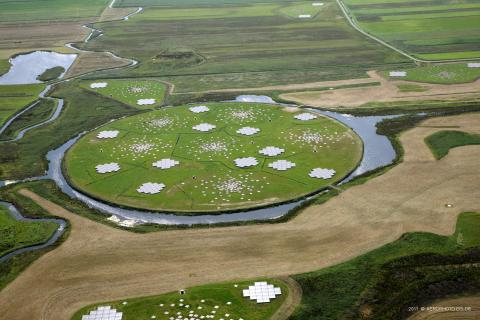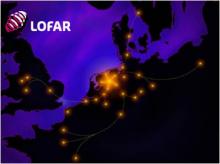About the Project
- LOFAR is a novel low-frequency radio astronomy array that uses a new approach to obtain a breakthrough in sensitivity for astronomical observations at radio-frequencies below 250 MHz.
- The basic technology of radio telescopes had not changed since the 1960's: large mechanical dish antennas collect signals before a receiver detects and analyses them. Half the cost of these telescopes lies in the steel and moving structure. A telescope 100x larger than existing instruments would therefore be unaffordable. New technology was required to make the next step in sensitivity needed to unravel the secrets of the early universe and the physical processes in the centres of active galactic nuclei.
- The LOFAR array records the incoming signals at a very high data rate, and then uses the power of supercomputers to correlate the separate signals to create maps of the sky. Among the objectives of the project is the detection of diffuse neutral hydrogen clouds during the epoch of recombination of the intergalactic gas.
 Cavendish AP Group involvement
Cavendish AP Group involvement
- The Cavendish Astrophysics group is a member of the UK Consortium that is bidding to host a number of elements of the array to provide larger baselines and greater sensitivity of the array.

